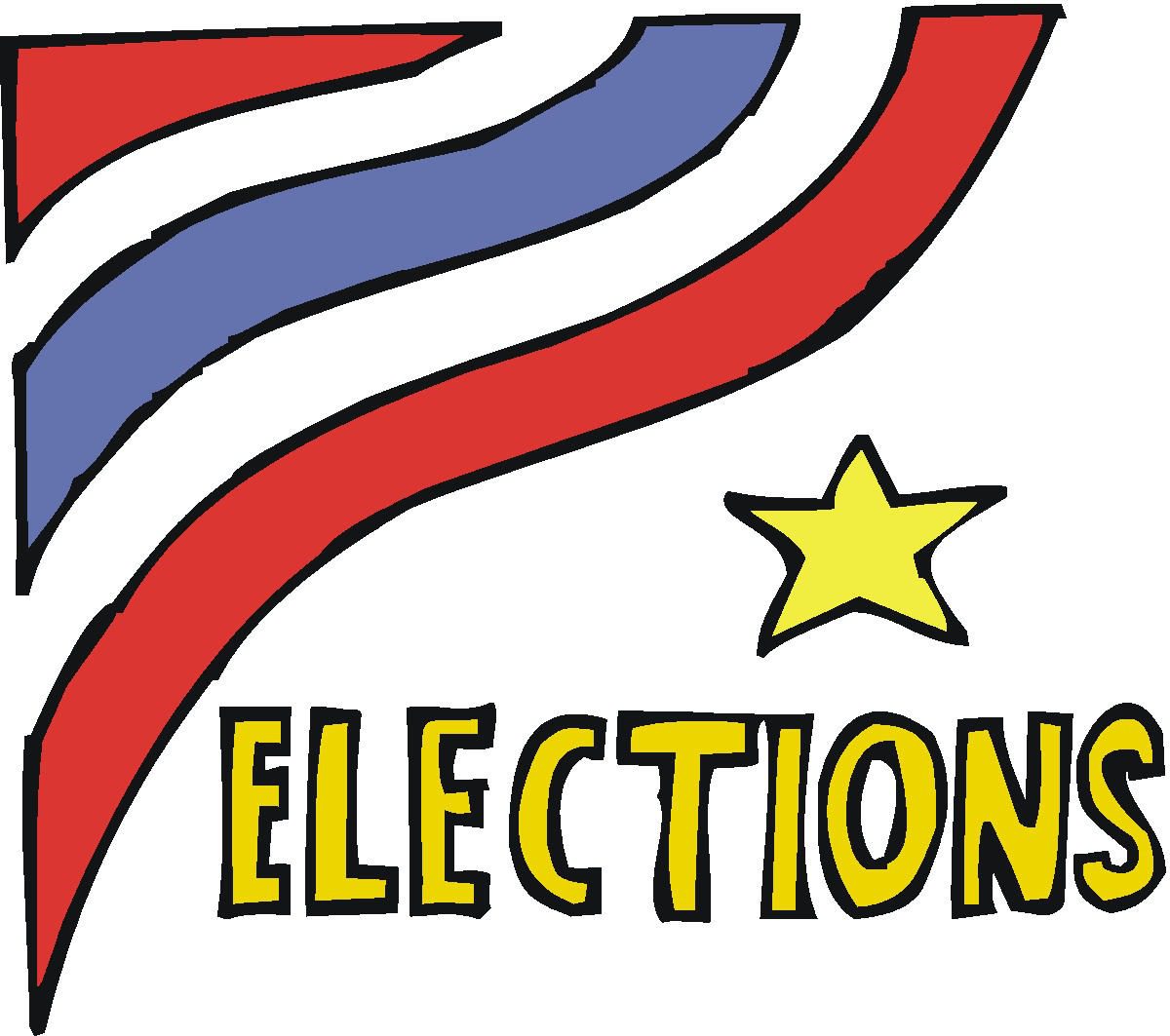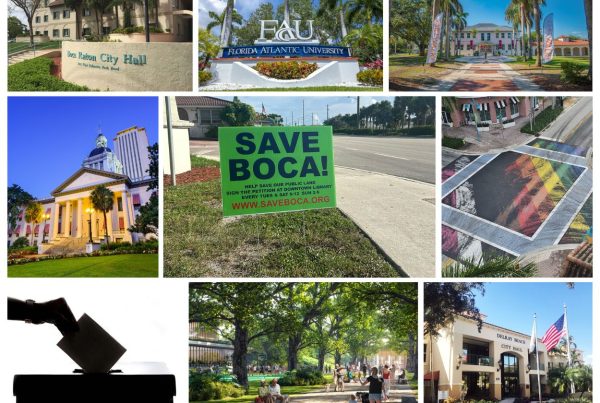The Boca race is on
With three weeks until the election, mailers are coming fast in the Boca Raton City Council Seat C race.
Frank Chapman was out first, which came as no surprise. He was in the race three-plus months ago, with money from his wife paying for negative mailers that drove Armand Grossman out of the race.
Though Chapman has two challengers—Jeremy Rodgers and Jamie Sauer—his target now is Sauer, who has support from former Boca Raton mayors Susan Whelchel and Steven Abrams. The brochure Chapman passes out when walking neighborhoods is upbeat and never mentions Sauer. Four mailers, though, depict Sauer as the favorite of developers. One calls Sauer a “developer’s puppet.” Sauer is a Realtor, and some of her backers are developers.
Still, one feature of Chapman’s mailers is misleading. In seeking to criticize the council’s approval of downtown development projects—and Sauer’s presumed agreement with those approvals—the mailers use a photo of bumper-to-bumper traffic on a 10-lane highway. Boca Raton has no such highway and no such traffic issues.
The busiest intersection in the city—indeed, in Palm Beach County—is Glades Road and Northwest 15th Ave., far from downtown. The major problem there is traffic to Florida Atlantic University and University Commons, and the intersection should become much easier to navigate when the Interstate 95 interchange at Spanish River Boulevard opens in 2017.
So far, Chapman is sticking with his plan to self-finance the campaign. His most recent campaign finance report, for the month of January, lists $102,000 in loans from himself—and no other contributions.
Sauer’s first mailer introduced herself rather than attacked Chapman. Again, that was no surprise. Sauer qualified to run on the last day. Though she’s a long-time resident, she needed to get her name out before responding—directly or indirectly —to Chapman’s characterization.
For that, Sauer will need money. Her January finance report lists nearly $30,000 in contributions. She can assume that Chapman won’t stop at $102,000.
And the Delray race gets more crowded
Delray Beach was going to have three races in the March 10 election. Then there were two. But there still may be three.
The open Seat 3 race has four candidates. Former Mayor Tom Carney is challenging current Mayor Cary Glickstein. Seat 1 incumbent Shelly Petrolia may or may not have an opponent.
According to the Supervisor of Elections and the city clerk’s office, Petrolia has won reelection unopposed. Last week, the supervisor’s office ruled that Ryan Boylston did not obtain the required 250 petition signatures from registered voters by the qualifying deadline of noon on Feb. 10. Boylston, however, claims that he never heard from the city clerk’s office or the supervisor’s office in time to make sure that he had provided enough valid signatures. He claims that the information blackout wrongly denied him a chance to make the ballot. A hearing before Palm Beach County Circuit Judge Meanu Sasser could take place as early as today.
For the second year in a row, the supervisor’s office and the clerk’s office will be involved in a Delray Beach election dispute. Last year, Chris Davey questioned the number of absentee ballots in certain precincts in his race against Al Jacquet. Davey chose not to file a challenge.
Red-light cameras out
Boca Raton has made the smart but belated decision to end the city’s red-light camera program.
During his report near the end of last week’s city council meeting, City Manager Leif Ahnell said Boca would end the program after yet another anti-camera court ruling. This time, the 4th District Court of Appeal in West Palm Beach declined to grant Hollywood a rehearing in a case that led the court last October to rule that city’s camera program unconstitutional. The court also declined to certify the case to the Florida Supreme Court. Unless another appellate court upholds a similar red-light program, the ruling is in effect statewide.
The problem in Boca Raton and cities with similar programs is that the camera company—American Traffic Solutions, in Boca’s case—issues the citation. Under Florida’s uniform traffic law, the court said, only certified law enforcement officers can issue traffic citations.
Despite the cities’ claims that the programs were all about safety, it appeared that they were all about money. The programs sprouted during the recession, when property tax revenue dropped sharply. American Traffic Solutions and other vendors sold cities and counties on the idea that they could shift sworn officers to other duties.
But Florida’s new state constitution in 1968 abolished municipal courts and created statewide traffic laws. Cities couldn’t set up red-light camera traps any more than they could set up speed traps. After adverse court rulings on that point, the Legislature in 2010 created statewide rules for red-light programs—and took the largest share of the fine for the state.
Mayor Susan Haynie was on the losing side when the Boca Raton council approved the camera program. In an interview, she said her concern had been that even if the cameras cut down on crashes from running red lights, they could increase the number of rear-end crashes from drivers hitting the brakes to avoid a ticket. Indeed, whether the cameras improve safety remains in doubt.
All along, Haynie has argued that there’s a better alternative: extend the yellow light and keep the red light for a full second in all directions, to clear the intersection. She would like city staff to analyze data from high-risk intersections and recommend ideas.
Haynie said there would be “no fiscal impact” from ending the program because the city didn’t lose money. That may or may not be true. There’s talk of class-action lawsuits on behalf of all drivers who got tickets under programs now judged to have been illegal. Boca Raton could get caught up in that litigation. Delray Beach never started a program. Boynton Beach is one of the few cities that assign a sworn officer to check alleged violations.
Cities have many legal ways to make roads safer. Of course, they had them several years ago. Apparently, that sort of safety didn’t come with potential profit.
Ag Reserve talks
A second “roundtable” discussion about the future of Palm Beach County’sAgricultural Reserve Area takes place today. It’s the second and final such session before the county commission’s planned workshop on March 24.
The first roundtable, last September, brought out many small farmers who want looser rules on residential development in the reserve, most of which is west of Delray Beach and Boynton Beach past State Road 7. In 1999, however, voters approved $100 million in bonds, the money aimed at keeping as much farming in the reserve as possible. Some of those pushing for more development passed on the chance to sell their land earlier.
County staff held two “technical sessions” this month, after which the staff produced documents showing the effects of proposed changes. The reserve may seem far from downtown Boca Raton and Delray Beach, but the decision is major. Palm Beach County has lots of subdivisions but only one agricultural reserve.
••••••••
You can email Randy Schultz at randy@bocamag.com
For more City Watch blogs, click here.About the Author
Randy Schultz was born in Hartford, Conn., and graduated from the University of Tennessee in 1974. He has lived in South Florida since then, and in Boca Raton since 1985. Schultz spent nearly 40 years in daily journalism at the Miami Herald and Palm Beach Post, most recently as editorial page editor at the Post. His wife, Shelley, is director of The Learning Network at Pine Crest School. His son, an attorney, and daughter-in-law and three grandchildren also live in Boca Raton. His daughter is a veterinarian who lives in Baltimore.








